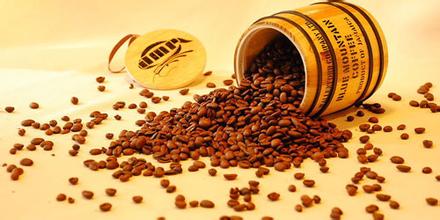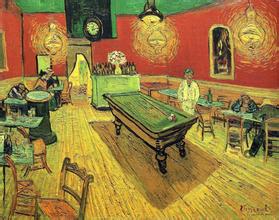Introduction of Burundian Coffee Cup Flavor testing production area taste Grinding scale Variety production area
Introduction of Burundian Coffee Cup Flavor testing production area taste Grinding scale Variety production area
Heat the water to 93 degrees, start pouring water into the tester, and start counting the time. Remember the order when filling coffee with water.
The tools needed for cup testing are simple: bean grinders, scales, thermometers, cups, spoons, such simple tools can be found on coffee farms, and cup tests can be done on coffee fields. Many values for brewing coffee are quantified: the grindability of the coffee powder, the weight of the coffee, and the temperature are all quantified to ensure that a cup of coffee on the test table is brewed under the same conditions.
In the industry chain of the coffee industry, there are several types of people who need to do cup testing:
Bean traders use cup tests to understand the quality of raw beans as the basis for transactions. in the trade of boutique coffee, the taste in the cup determines the price of coffee.
Coffee roaster, through cup measurement to determine the roasting degree of coffee and the quality control of coffee products.
In addition, even careful coffee shop owners will use cup tests to select suppliers.
Enthusiasts can also compare and understand the taste of several coffee beans through cup testing.
Frog Studio will hold several cup testing activities from June 20. You are welcome to come and experience the fun of cup testing.
Follow us and let us know if you are interested in coming to experience. Our staff will inform you in advance.
During the cup test, grind the coffee to a thicker powder and brew it in the cup according to the ratio of 8.25 grams of powder to 150 milliliters of hot water at 93 degrees Celsius. After filling the cup with water for three and a half minutes, stir three times with a spoon on the surface of the cup and skim off the floating foam. you can start to taste the coffee with a spoon.
The tools needed for cup testing are simple: bean grinders, scales, thermometers, cups, spoons, such simple tools can be found on coffee farms, and cup tests can be done on coffee fields. Many values for brewing coffee are quantified: the grindability of the coffee powder, the weight of the coffee, and the temperature are all quantified to ensure that a cup of coffee on the test table is brewed under the same conditions.
In the industry chain of the coffee industry, there are several types of people who need to do cup testing:
Bean traders use cup tests to understand the quality of raw beans as the basis for transactions. in the trade of boutique coffee, the taste in the cup determines the price of coffee.
Coffee roaster, through cup measurement to determine the roasting degree of coffee and the quality control of coffee products.
In addition, even careful coffee shop owners will use cup tests to select suppliers.

Important Notice :
前街咖啡 FrontStreet Coffee has moved to new addredd:
FrontStreet Coffee Address: 315,Donghua East Road,GuangZhou
Tel:020 38364473
- Prev

Introduction to the varieties of Grinding scale for the description of Flavor in Brazilian Coffee Manor
Brazilian Coffee Manor Flavor description, Taste treatment, Grinding Calibration Variety introduction [boutique on the market] Queen Mongiana Manor Yellow bourbon Sun treatment Brazil Rainha Yellow Bourbon Natural production area: Sao Paulo State (So Paulo) Mogiana (Alta Mogiana) area Manor: Fazenda Rainha (Queen Farm) products
- Next

Starbucks Arabica Coffee Bean Flavor description Grinding scale Variety production area Manor
Starbucks Arabica Coffee Bean Flavor description Grinding scale Variety producing area Manor introduces "Bourbon" bourbon is an ancient and excellent variety juxtaposed with iron pickup, and some botanists believe that bourbon is an early variety of iron pickup transplanted to Yemen. Bourbon is almost all round beans, beans are a little smaller than tin card, ripening later, but the yield is 30% more than tin card. It is suitable for planting in the sea.
Related
- Detailed explanation of Jadeite planting Land in Panamanian Jadeite Manor introduction to the grading system of Jadeite competitive bidding, Red bid, Green bid and Rose Summer
- Story of Coffee planting in Brenka region of Costa Rica Stonehenge Manor anaerobic heavy honey treatment of flavor mouth
- What's on the barrel of Blue Mountain Coffee beans?
- Can American coffee also pull flowers? How to use hot American style to pull out a good-looking pattern?
- Can you make a cold extract with coffee beans? What is the right proportion for cold-extracted coffee formula?
- Indonesian PWN Gold Mandrine Coffee Origin Features Flavor How to Chong? Mandolin coffee is American.
- A brief introduction to the flavor characteristics of Brazilian yellow bourbon coffee beans
- What is the effect of different water quality on the flavor of cold-extracted coffee? What kind of water is best for brewing coffee?
- Why do you think of Rose Summer whenever you mention Panamanian coffee?
- Introduction to the characteristics of authentic blue mountain coffee bean producing areas? What is the CIB Coffee Authority in Jamaica?

